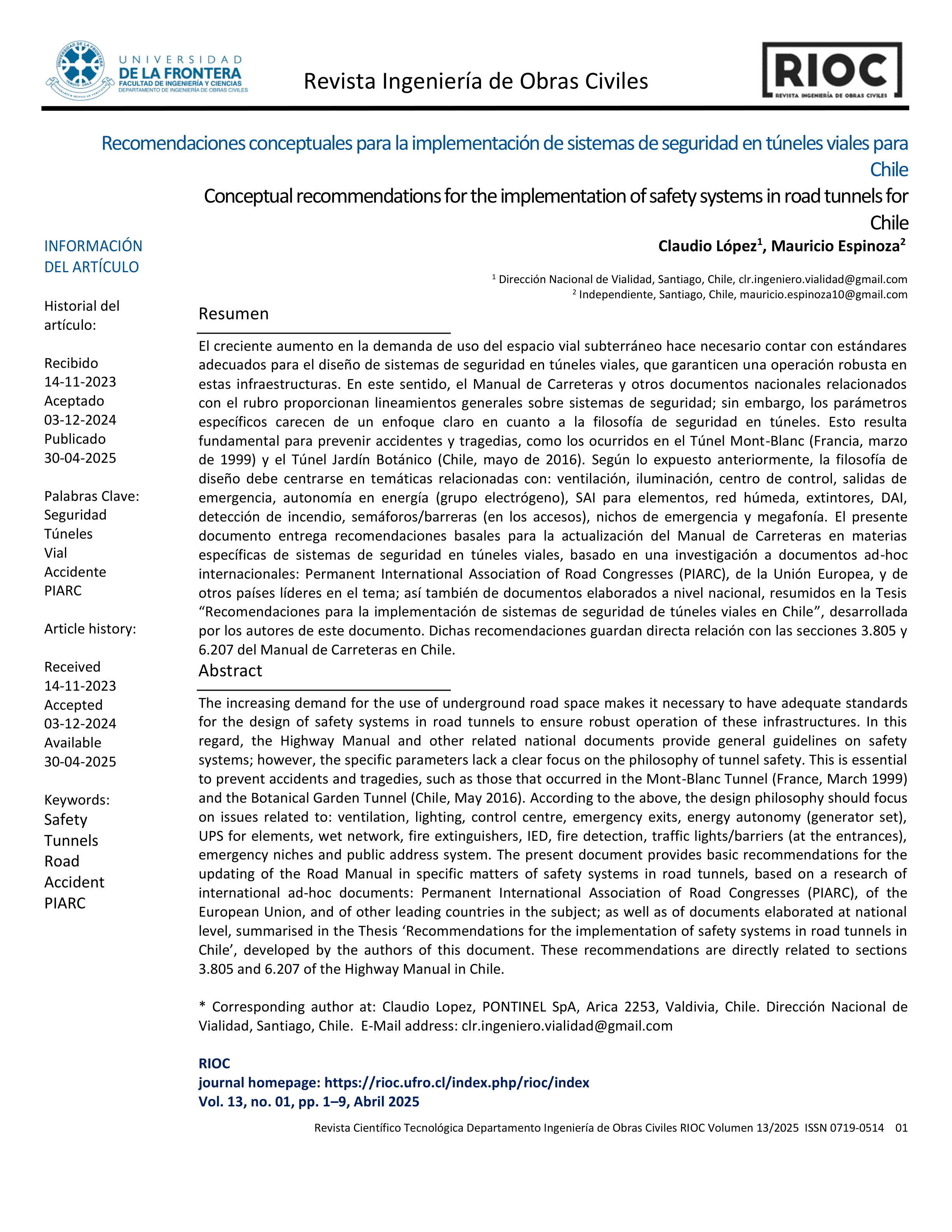Recomendaciones conceptuales para la implementación de sistemas de seguridad en túneles viales para Chile
Palabras clave:
Seguridad, Túneles, Vial, Accidente, PIARCResumen
El creciente aumento en la demanda de uso del espacio vial subterráneo hace necesario contar con estándares adecuados para el diseño de sistemas de seguridad en túneles viales, que garanticen una operación robusta en estas infraestructuras. En este sentido, el Manual de Carreteras y otros documentos nacionales relacionados con el rubro proporcionan lineamientos generales sobre sistemas de seguridad; sin embargo, los parámetros específicos carecen de un enfoque claro en cuanto a la filosofía de seguridad en túneles. Esto resulta fundamental para prevenir accidentes y tragedias, como los ocurridos en el Túnel Mont-Blanc (Francia, marzo de 1999) y el Túnel Jardín Botánico (Chile, mayo de 2016). Según lo expuesto anteriormente, la filosofía de diseño debe centrarse en temáticas relacionadas con: ventilación, iluminación, centro de control, salidas de emergencia, autonomía en energía (grupo electrógeno), SAI para elementos, red húmeda, extintores, DAI, detección de incendio, semáforos/barreras (en los accesos), nichos de emergencia y megafonía. El presente documento entrega recomendaciones basales para la actualización del Manual de Carreteras en materias específicas de sistemas de seguridad en túneles viales, basado en una investigación a documentos ad-hoc internacionales: Permanent International Association of Road Congresses (PIARC), de la Unión Europea, y de otros países líderes en el tema; así también de documentos elaborados a nivel nacional, resumidos en la Tesis “Recomendaciones para la implementación de sistemas de seguridad de túneles viales en Chile”, desarrollada por los autores de este documento. Dichas recomendaciones guardan directa relación con las secciones 3.805 y 6.207 del Manual de Carreteras en Chile.
Descargas

Descargas
Publicado
Cómo citar
Número
Sección
Licencia
Derechos de autor 2025 Claudio López, Mauricio Espinoza

Esta obra está bajo una licencia internacional Creative Commons Atribución 4.0.
Los autores/as que publiquen en esta revista aceptan las siguientes condiciones:
- Los autores/as conservan los derechos de autor y ceden a la revista el derecho de la primera publicación, con el trabajo registrado con la licencia de atribución de Creative Commons, que permite a terceros utilizar lo publicado siempre que mencionen la autoría del trabajo y a la primera publicación en esta revista.
- Los autores/as pueden realizar otros acuerdos contractuales independientes y adicionales para la distribución no exclusiva de la versión del artículo publicado en esta revista (p. ej., incluirlo en un repositorio institucional o publicarlo en un libro) siempre que indiquen claramente que el trabajo se publicó por primera vez en esta revista.
- Se permite y recomienda a los autores/as a publicar su trabajo en Internet (por ejemplo en páginas institucionales o personales) antes y durante el proceso de revisión y publicación, ya que puede conducir a intercambios productivos y a una mayor y más rápida difusión del trabajo publicado (vea The Effect of Open Access).



